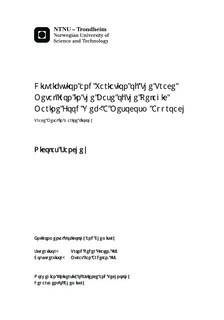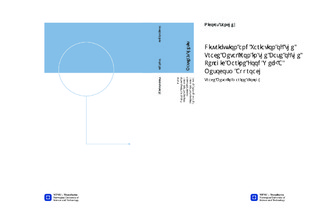| dc.description.abstract | This study was part of the WAFOW project “Can waste emission from fish farms change the structure of marine food webs?” whose objective was to perform mesocosms experiment to simulate the ammonium enriched environment, caused by salmon aquaculture. In order to assess how changes in the stoichiometry of major elements (nitrogen) in the sea affect the distribution of bioactive trace metals, and its effects on the base of the pelagic food web, the distribution and variation in time of the trace metal iron in the water and within the plankton community was studied along a 22 day experiment. It involved 2 types of water (surface and marine systems) each one, with 1 control and 4 NH4+ concentrations. Additional samples collected in a river transect and in depth provided the general Fe distribution in the environment. The iron concentration in the water was determine for three fractions as: Chelex labile (Total: TFeCh and dissolved: DFeCH), DGT labile (FeDGT) and direct (Total: TFe and dissolved: DFe), whereas the particulate concentration iron in the plankton community was determined both per fraction (PFeSF) and total content (PFe>0.2). Total average per treatments showed higher concentrations for both TfeCh and DFeCh in the marine systems compare to the surface. TFeCh showed general increasing trend in time and with increase NH4+ concentration, with a sharp decrease towards the end of the experiment in both systems. DFeCh pattern was inverse to TFeCh, with general decrease over time but lower in magnitude. FeDGT showed an average lower concentration compare to DFeCh with no define trend over time. Final FeDGT concentrations were significantly lower in treatments with artificial NH4+ addition. PFe>0.2 showed an increasing trend in time and with increased NH4+ in both systems. However when normalized to Chlorophyll-a (Chl-a) or particulate organic carbon (POC) the trend inverted, showing that at higher NH4+ influx the iron per Chl-a or POC decreases. PFeSF major changes occurred in the marine system where a estimation of the ratio between the 20-140 µm and the 2-20 µm fractions, indicative of the dominant phytoplankton size class, was significantly higher in 2 of the 3 treatments with artificial NH4+ addition. This point that the microphytoplankton increased significantly with higher NH4+. The variation over time of the concentration of Fe in the water as in the plankton community, indicate that the concentration of NH4+ can have positive or negative relation depending on the iron form. Whether via increasing the PFeCh, or by reducing the uptake by phytoplankton, a modified C:N:P can affect the cycling of iron, which in turn can have negative or positive feedbacks over the major biogeochemical cycles. | nb_NO |

